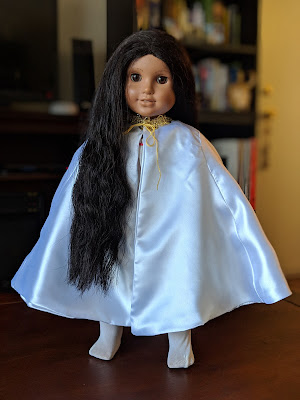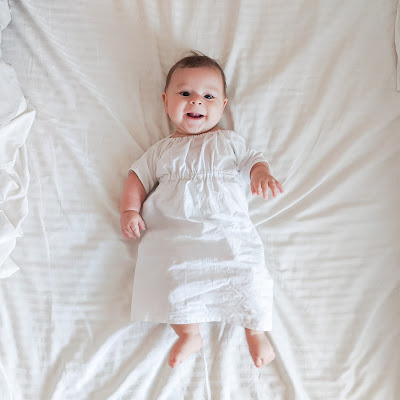Drafting Your Own Size For My 1940s Blouse Pattern
I want to begin first with clarifying that this is not how to draft any blouse pattern, but particularly my 1940s Vintage Inspired Blouse, from the previous blog post. Not necessarily a beginner's tutorial, but hopefully still simple to follow!
To draft this pattern you will need:
- Measuring tape
- Pencil
- A large sheet of paper (wrapping paper, wax paper, newspaper, etc...)
- Calculator
- French Curve Ruler (click to download from https://growyourownclothes.com/)
1. So your first step is to gather your own measurements, whether for your self or another person. You will want your measurements to comfortable, not too loose or too tight.
You will need measurements of:
- Bust*
- Waist*
- Length from base of neck to desired shirt length
- Length from base of neck to waist
- Length from top of shoulder to armscye (below armpit)
- Circumference of bicep*
- Length from base of neck to end of the shoulder
*You will need to add wearing ease. This is a fitted blouse so I would recommend 2 inches to the bust, and 1 1/2 inches to the waist and bicep circumference.
With these new measurements, you can now begin to draft your new pattern!
2. You will start by drawing a rectangle. The width is your bust measurement and the height is the length from base of the neck to desired shirt length.
3. Now you will draw in the waistline which is placed at the length from the base of the neck to the waist.
4. Now draw a vertical line down the center of the rectangle. This will divide the shape into the front and back piece.
 |
| Front - Back |
5. Now some math to figure the dart placement! First, take your bust measurement and subtract your waist measurement. (For example, 38" - 30" = 8")
Divide that number in half. (4")
Now you will have 2 different dart sizes. We will calculate Dart A then Dart B.
Dart A:
Multiply the new number (4") by 0.7. (2.8")
Now divide (2.8") by 4. (0.7")
Dart B:
Multiply that same new previous number (4") by 0.3. (1.2")
Divide (1.2") by 3. (0.4")
These 2 measurements (0.7" and 0.4") are the 2 widths of darts you will use. Now, these are the full dart width so you will center this measurement on the dart line. (0.4" would become 0.2" on either side of line)
6. For the dart line placement, first, you will place the Dart A's. One goes in the middle of the front piece, one on the center line, and one on the center back (center back is half a dart). Now you will center the Dart A measurement (0.7") on each of these lines. Then connect those points to the ends of darts.
7. On to the Dart B's! For the first 2 darts, you will measure 1/2" away from Dart A on the front, on both sides. You will then from those points measure the Dart B measurement (0.4") and plot those points. The Dart B on the back is centered on the back section. Then connect lines to the ends of darts.
 |
| Front - Back |
8. For the neckline, shoulder, and armhole, there are so many methods of drafting, explained much better than I could. I would recommend either printing out the original pattern, and using the cut and splay method, or even tracing a shirt you already own. I may do a more in-depth tutorial in the future, but for this tutorial, I am keeping it to details pertaining only to this pattern, as otherwise, this post would be a scroll that falls from a courtier standing next to a king rolling from the throne, out the door.
 |
| Front - Back |
9. Then you will add 2 inches to the center front to form the button placket.
 |
| Front - Back |
10. With the puff sleeves, I would recommend scaling the pattern width to make the length 160% longer than your bicep circumference. For example, if your arm is 16" around, multiply by 1.6 and you want your finished sleeve to be 25.6". You would add the additional width in the center of the sleeve. The sleeve hem will be the same length as your bicep measurement.
11. The collar, if needed to be altered at all will only need length added at the center fold line, and the ties are one size fits all.
12. Lastly, be sure to add seam allowance to all pattern pieces, and you are all finished!
I hope that you found this tutorial helpful, and please let me know if you have any questions!
Till next time! ♥️








Comments
Post a Comment